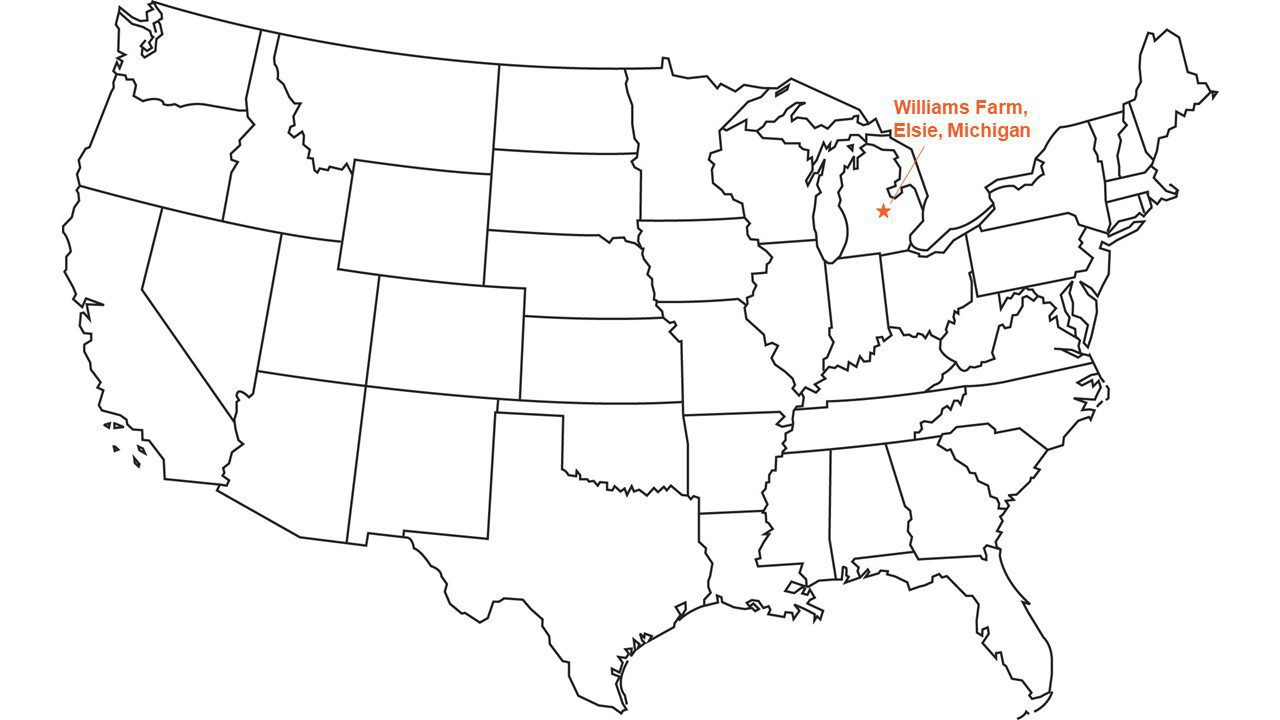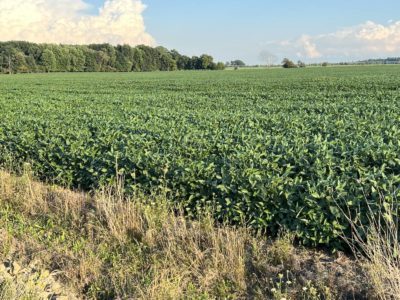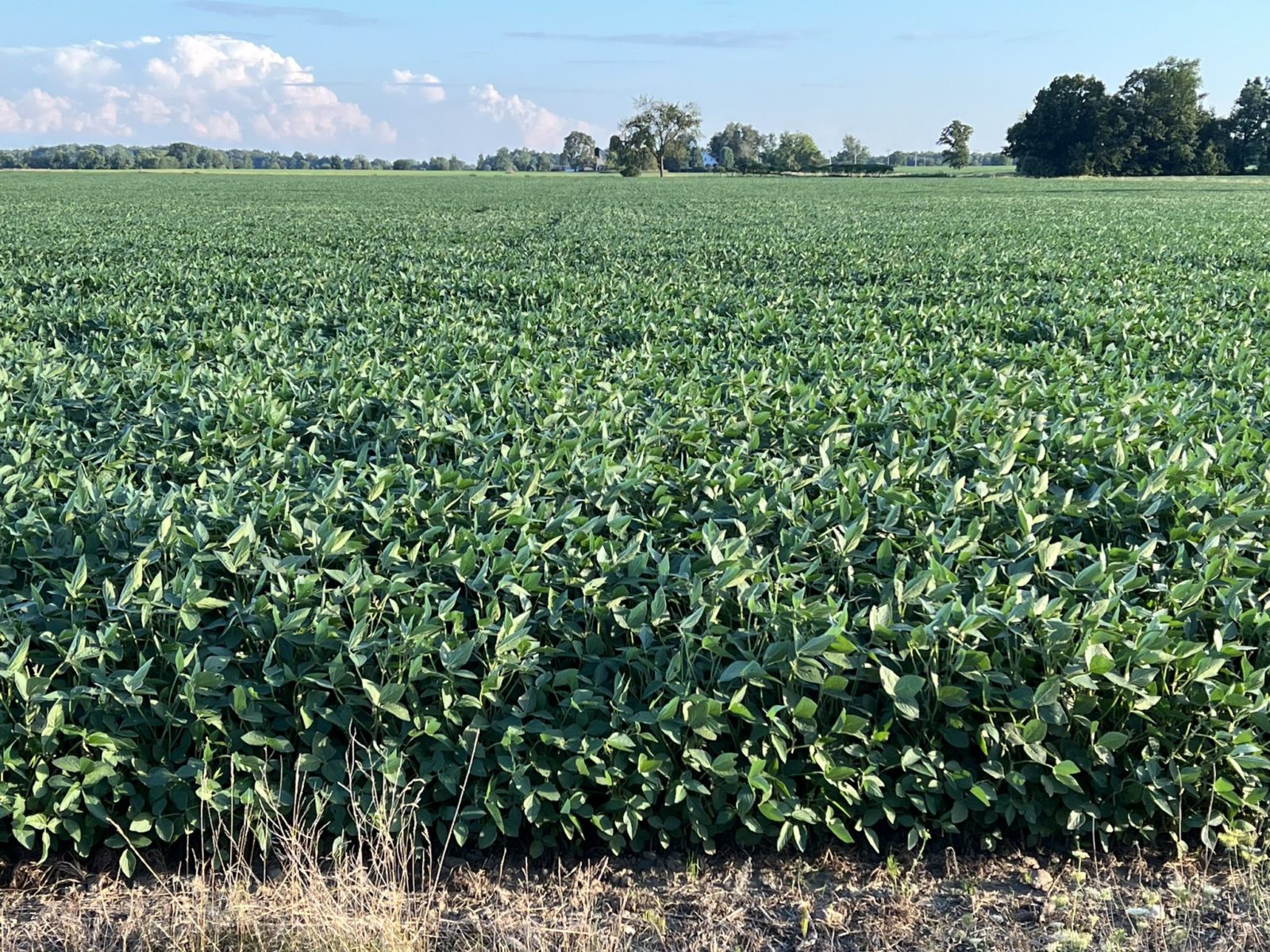 In early August, we finally got a good, timely rain in our area of Michigan, in the eastern U.S. Midwest. That was ideal timing for our soybeans, which currently look gorgeous.
In early August, we finally got a good, timely rain in our area of Michigan, in the eastern U.S. Midwest. That was ideal timing for our soybeans, which currently look gorgeous.
Our soybeans are green, loaded with blossoms and starting to set pods. After applying herbicide to control weeds in the growing soybeans during early July, the fields have no weeds to speak of. These are the cleanest soybean fields I’ve ever had. It’s wonderful!
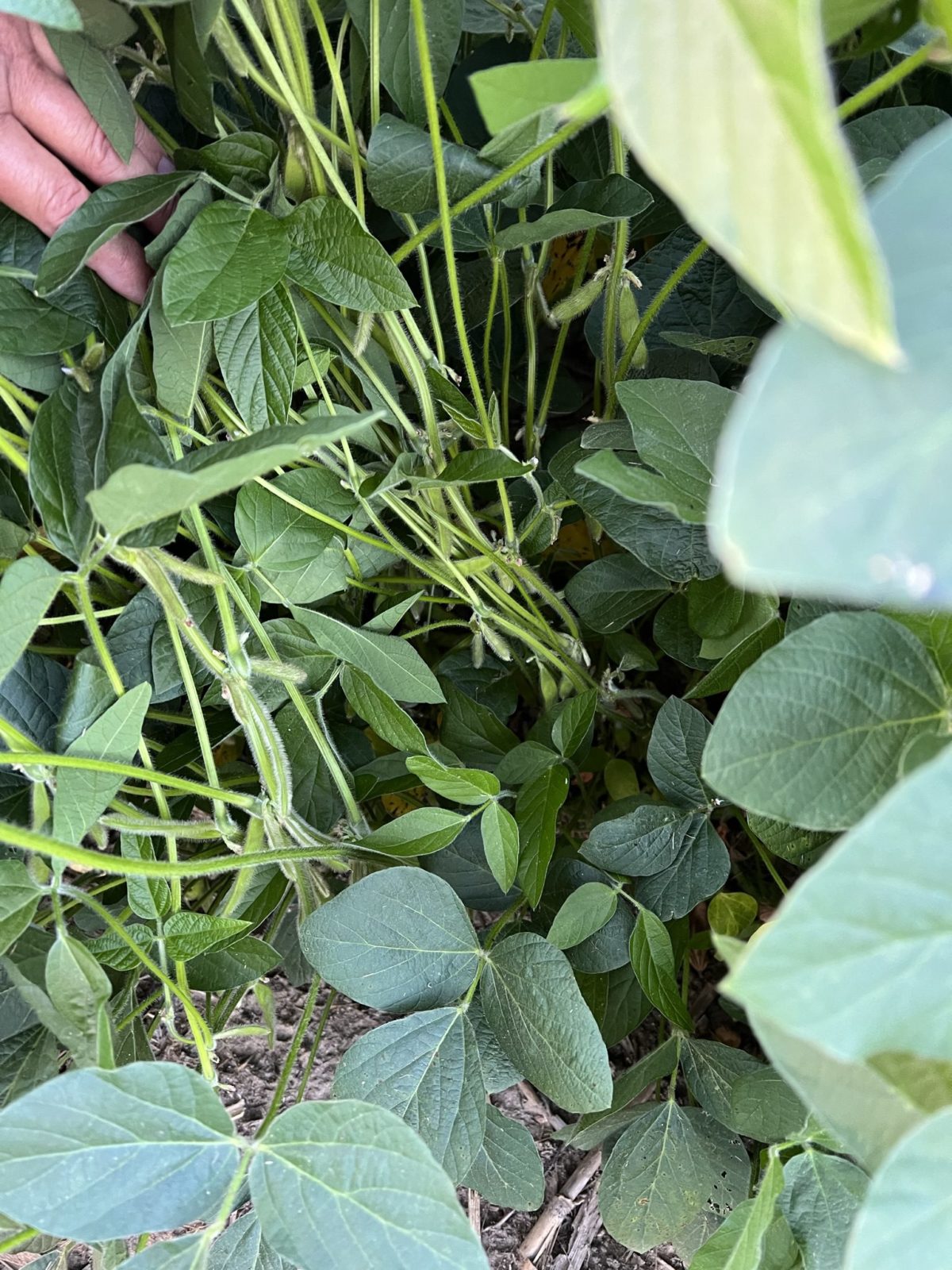 August will be a critical month for soybean production, but if we continue to get timely rain, the crop is set up to yield really well. We regularly monitor and scout the soybeans for disease and insect pressure. As long as we don’t see any pests, we will leave the crop to grow. I think it’s best for the crop if we don’t disturb the micro-climate that develops under the soybean leaf canopy.
August will be a critical month for soybean production, but if we continue to get timely rain, the crop is set up to yield really well. We regularly monitor and scout the soybeans for disease and insect pressure. As long as we don’t see any pests, we will leave the crop to grow. I think it’s best for the crop if we don’t disturb the micro-climate that develops under the soybean leaf canopy.
The corn is tasseling and ears are starting to form. The rain was timely for corn yield potential, as well. However, we can see that tar spot, a disease that has become an annual problem, is coming into our corn fields. We will hire a neighbor who has a high-clearance sprayer to apply fungicide to control this disease.
Aside from this disease pressure, our corn has not had a bad day since it was planted. If we keep getting timely rain, our corn has the potential to produce an excellent yield.
Our alfalfa, a leafy forage we sell to a local dairy for feed, also is responding to the timely rain. Our second alfalfa cutting in mid-July was not very good because we had received almost no rain since the first cutting. However, it is now growing well, and we expect our third cutting, which we will do in mid-August, to yield above average.
We constantly look for opportunities to improve our fields. Due to the very wet spring, we were not able to plant a couple of our fields, leaving them fallow. With no crop in them, we have the opportunity to improve them for future crops. Our team has been cleaning small trees and brush out of the fence rows. The fields run along wooded areas, so we’ve trimmed branches to open those areas up to light and rain. That helps both the trees and future crops grow better.
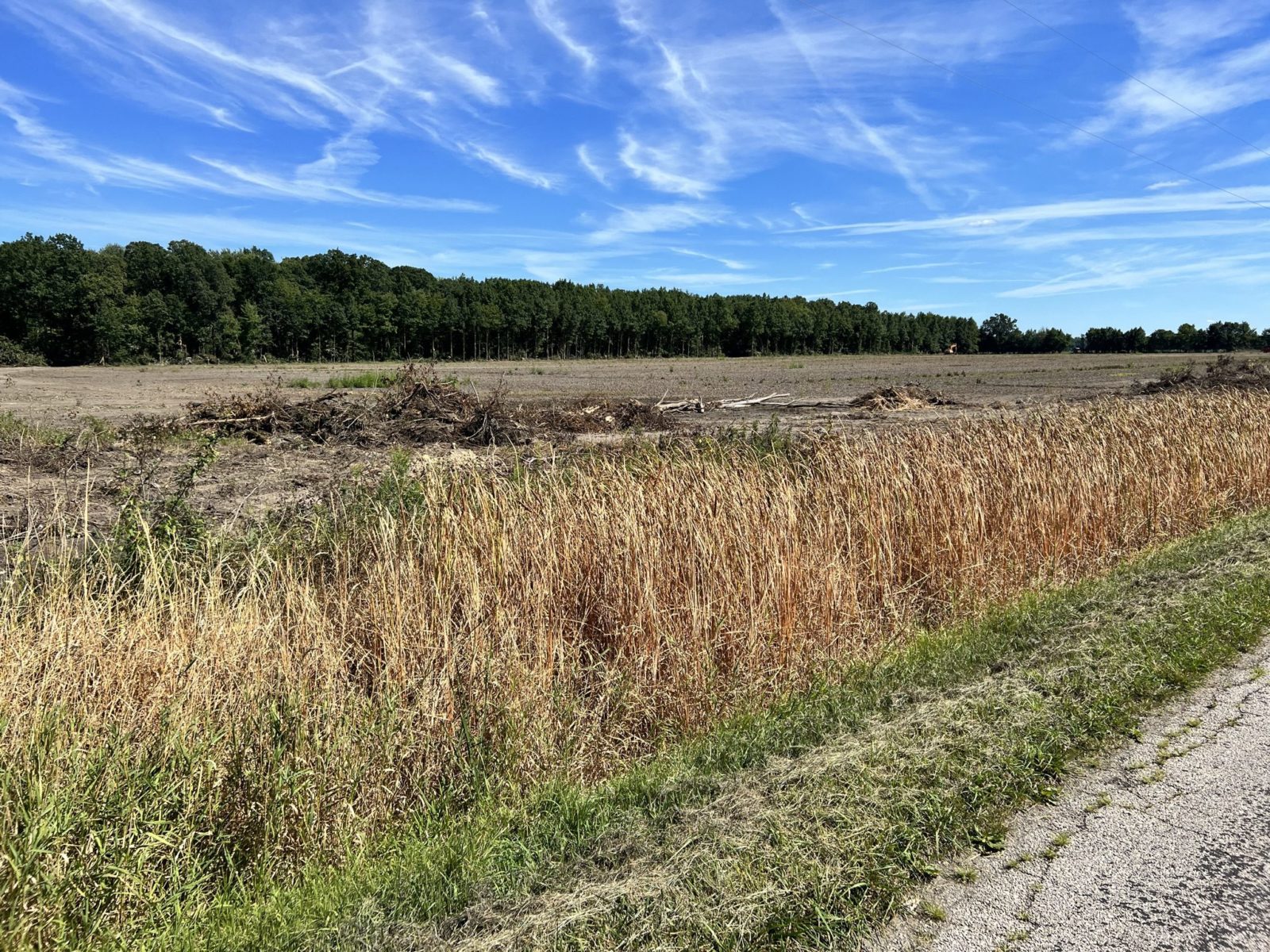 My great-great grandfather tiled these wet, flat fields by hand. That means he dug trenches for clay tubes designed to help water drain. Improving our land has always been a priority for my family. That tile has likely broken down over the years, so we plan to update the tiles in these fields during the next few weeks. It needs to be upgraded. Installing modern tile, slitted plastic tubes, will improve drainage and soil health so that it is much more likely that we will be able to plant these fields even during wet springs in the future. That improves the long-term sustainability of our farm.
My great-great grandfather tiled these wet, flat fields by hand. That means he dug trenches for clay tubes designed to help water drain. Improving our land has always been a priority for my family. That tile has likely broken down over the years, so we plan to update the tiles in these fields during the next few weeks. It needs to be upgraded. Installing modern tile, slitted plastic tubes, will improve drainage and soil health so that it is much more likely that we will be able to plant these fields even during wet springs in the future. That improves the long-term sustainability of our farm.
Harvest in our area typically starts in mid-September. Right now, yield potential looks strong for both soybeans and corn. I am looking forward to harvesting another sustainable soybean crop for our customers worldwide.
